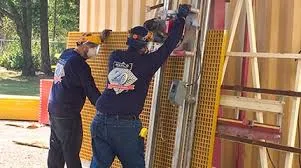
-
 Afrikaans
Afrikaans -
 Albanian
Albanian -
 Amharic
Amharic -
 Arabic
Arabic -
 Armenian
Armenian -
 Azerbaijani
Azerbaijani -
 Basque
Basque -
 Belarusian
Belarusian -
 Bengali
Bengali -
 Bosnian
Bosnian -
 Bulgarian
Bulgarian -
 Catalan
Catalan -
 Cebuano
Cebuano -
 China
China -
 China (Taiwan)
China (Taiwan) -
 Corsican
Corsican -
 Croatian
Croatian -
 Czech
Czech -
 Danish
Danish -
 Dutch
Dutch -
 English
English -
 Esperanto
Esperanto -
 Estonian
Estonian -
 Finnish
Finnish -
 French
French -
 Frisian
Frisian -
 Galician
Galician -
 Georgian
Georgian -
 German
German -
 Greek
Greek -
 Gujarati
Gujarati -
 Haitian Creole
Haitian Creole -
 hausa
hausa -
 hawaiian
hawaiian -
 Hebrew
Hebrew -
 Hindi
Hindi -
 Miao
Miao -
 Hungarian
Hungarian -
 Icelandic
Icelandic -
 igbo
igbo -
 Indonesian
Indonesian -
 irish
irish -
 Italian
Italian -
 Japanese
Japanese -
 Javanese
Javanese -
 Kannada
Kannada -
 kazakh
kazakh -
 Khmer
Khmer -
 Rwandese
Rwandese -
 Korean
Korean -
 Kurdish
Kurdish -
 Kyrgyz
Kyrgyz -
 Lao
Lao -
 Latin
Latin -
 Latvian
Latvian -
 Lithuanian
Lithuanian -
 Luxembourgish
Luxembourgish -
 Macedonian
Macedonian -
 Malgashi
Malgashi -
 Malay
Malay -
 Malayalam
Malayalam -
 Maltese
Maltese -
 Maori
Maori -
 Marathi
Marathi -
 Mongolian
Mongolian -
 Myanmar
Myanmar -
 Nepali
Nepali -
 Norwegian
Norwegian -
 Norwegian
Norwegian -
 Occitan
Occitan -
 Pashto
Pashto -
 Persian
Persian -
 Polish
Polish -
 Portuguese
Portuguese -
 Punjabi
Punjabi -
 Romanian
Romanian -
 Russian
Russian -
 Samoan
Samoan -
 Scottish Gaelic
Scottish Gaelic -
 Serbian
Serbian -
 Sesotho
Sesotho -
 Shona
Shona -
 Sindhi
Sindhi -
 Sinhala
Sinhala -
 Slovak
Slovak -
 Slovenian
Slovenian -
 Somali
Somali -
 Spanish
Spanish -
 Sundanese
Sundanese -
 Swahili
Swahili -
 Swedish
Swedish -
 Tagalog
Tagalog -
 Tajik
Tajik -
 Tamil
Tamil -
 Tatar
Tatar -
 Telugu
Telugu -
 Thai
Thai -
 Turkish
Turkish -
 Turkmen
Turkmen -
 Ukrainian
Ukrainian -
 Urdu
Urdu -
 Uighur
Uighur -
 Uzbek
Uzbek -
 Vietnamese
Vietnamese -
 Welsh
Welsh -
 Bantu
Bantu -
 Yiddish
Yiddish -
 Yoruba
Yoruba -
 Zulu
Zulu
frp pipes and fittings utilized in ship construction
FRP Pipes and Fittings Utilized in Ship Construction
In the maritime industry, the construction and maintenance of ships necessitate the use of durable, lightweight, and corrosion-resistant materials. Among these materials, Fiber Reinforced Polymer (FRP) pipes and fittings have gained significant attention for their unique properties and benefits. The incorporation of FRP in ship construction has revolutionized various systems on board, offering improved performance and longevity.
FRP is composed of a polymer matrix reinforced with fibrous materials, typically glass, carbon, or aramid fibers. This combination results in a composite material that is not only lightweight but also exceptionally strong. The low density of FRP makes it an ideal choice for shipbuilding, as reducing weight is crucial for improving fuel efficiency and enhancing overall vessel performance.
One of the primary advantages of FRP pipes and fittings is their outstanding resistance to corrosion. Traditional materials like steel and aluminum are susceptible to marine corrosion, leading to costly maintenance and potential failures. In contrast, FRP’s non-corrosive properties ensure that pipes and fittings can withstand harsh marine environments, including exposure to seawater, chemicals, and extreme temperatures. This durability translates to lower maintenance costs and longer service life, which are critical factors for ship operators.
Additionally, FRP materials are highly resistant to temperature fluctuations and thermal expansion, making them suitable for various applications on ships, including cooling systems, drainage, and wastewater management. The flexibility in designing FRP systems allows for custom fittings that can accommodate unique vessel configurations, enhancing space efficiency on board.
frp pipes and fittings utilized in ship construction

Another significant benefit of using FRP in ship construction is its insulating properties. Unlike metal pipes, FRP does not conduct heat, helping to regulate temperatures within systems and minimizing energy loss. This characteristic is especially important for systems that require temperature control, such as cooling and heating applications. Moreover, the insulation properties contribute to safety on board, reducing the risk of burns or thermal exposure.
The installation of FRP pipes and fittings also offers advantages in terms of labor efficiency. The lightweight nature of FRP simplifies handling, transportation, and assembly, leading to faster installation times compared to traditional materials. This efficiency not only reduces labor costs but also shortens construction timelines, allowing for quicker vessel deliveries.
Furthermore, the adaptability of FRP technology is driving innovations in ship design. As environmental regulations become more stringent, shipbuilders are increasingly turning to FRP to meet these demands while ensuring compliance with sustainability standards. The use of composites contributes to the overall sustainability of shipbuilding practices.
In conclusion, the integration of FRP pipes and fittings in ship construction presents numerous advantages, including corrosion resistance, weight savings, thermal insulation, and labor efficiency. As the industry continues to evolve, the use of FRP materials is likely to expand, further enhancing the performance and sustainability of maritime vessels. The trend towards adopting advanced composite materials like FRP is paving the way for a new era in shipbuilding, focusing on efficiency, durability, and environmental responsibility.
Latest news
-
Exploring the Benefits of Top Hammer Drifter Rods for Enhanced Drilling PerformanceNewsJun.10,2025
-
High-Precision Fiberglass Winding Machine for GRP/FRP Pipe Production – Reliable & Efficient SolutionsNewsJun.10,2025
-
FRP Pipes & Fittings for Shipbuilding - Corrosion-Resistant & LightweightNewsJun.09,2025
-
Premium FRP Flooring Solutions Durable & Slip-ResistantNewsJun.09,2025
-
Premium Fiberglass Rectangular Tanks Durable & Lightweight SolutionNewsJun.09,2025
-
Tapered Drill String Design Guide Durable Performance & UsesNewsJun.09,2025









